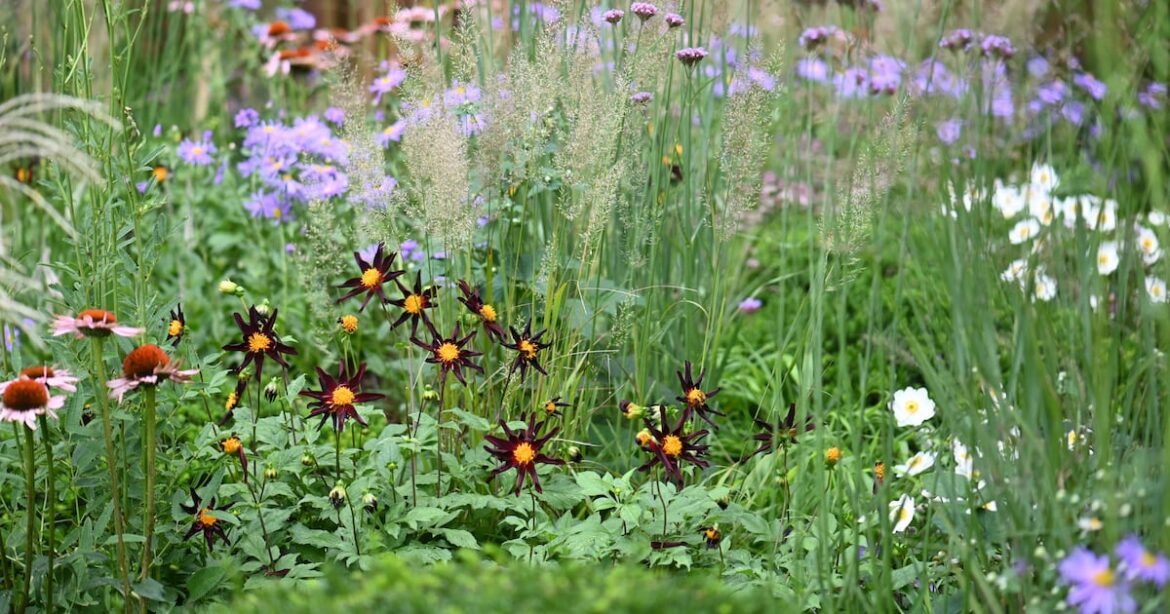This is the time of year that most gardeners live for. In terms of the edible garden, we’re in the midst of peak harvest season, while ornamental spaces should be brimming with life and colour.
Weather-wise, it’s been reasonably good. We can’t complain that there’s been too little sunshine, or not enough rain, in what has so far been a reasonably balanced summer.
The verges that have been left to flourish are a testimony to these conditions: meadowsweet, hogweed, yarrow and tall arching, golden grasses on strips at the sides of roads provide a glimpse of how much of our countryside once looked.
Before the post-war explosion in silage making, meadows and species-rich grassland were the norm in every parish.


Occurring naturally in some circumstances but more often managed for the production of hay, meadows were a living representation of biodiversity, before the term had been coined. They were steadily replaced by a monoculture of rye grass, fertilised with copious amounts of slurry.
As meadows have declined, the desire to replicate these once-common rural features has grown though these days you’re as likely to find a ‘wildflower’ display in the heart of a city as in a traditional pastoral setting.
However, these natural-looking mixes of colourful annuals require quite a bit of maintenance and in many cases weedkillers like glyphosate are used to ensure the seeds of the selected annuals have minimal competition from ‘weeds’. In addition, many of the plants chosen for their colourful blooms aren’t the natives preferred by indigenous insects.
 Perennials mimicking annual wildflowers (Kanokwalee Pusitanun/Getty Images)
Perennials mimicking annual wildflowers (Kanokwalee Pusitanun/Getty Images)
An alternative to the annual, high-maintenance of the ‘wildflower’ display is ‘prairie planting’, or what’s become known as ‘matrix planting’.
The idea is to eschew formality and instead mimic wild plant communities with a blend of grasses and perennials.
According to Dutch garden designer Piet Oudolf, one of the main proponents of this naturalised planting style, the ‘matrix’ is a species planted in large numbers that works as the scheme’s background.
This is punctuated by drifts of ‘primary’ perennials, clusters of the same impactful plant positioned inregularly amid the background.
The choice grasses are the likes of Stipa tenuissima ‘Pony Tails’, Sporobolus heterolepis and Imperata cylindrica ‘Rubra’, while perennials such as Helenium ‘Moerheim Beauty’, Sanguisorba ‘Blackthorn’ and Lysimachia ephemerum provide colour.
The final element is a random scattering of ‘secondary’ taller plants like Verbascum or Eryngium yuccifolium, also known as rattlesnake master.
As well as its aesthetics, the idea behind matrix planting is a degree of self-sustainability, which in the best case scenario means the scheme can be left to its own devices from year to year.
Plants are positioned closer than they would be in a traditional border, becoming knitted togther over time and therefore reducing the need for mulching and weeding, as less of the ground is exposed.
Inadvertently, this minimal maintenance approach creates a more natural and inviting habitat than a you’ll find in a conventional garden.
Yet it’s important to note that while the matrix and prairie styles may look almost wild and uncontrived, a great deal of planning goes into creating this look.
Similarly, this is not a cheap option, with many often expensive plants needed to fill the required space.

